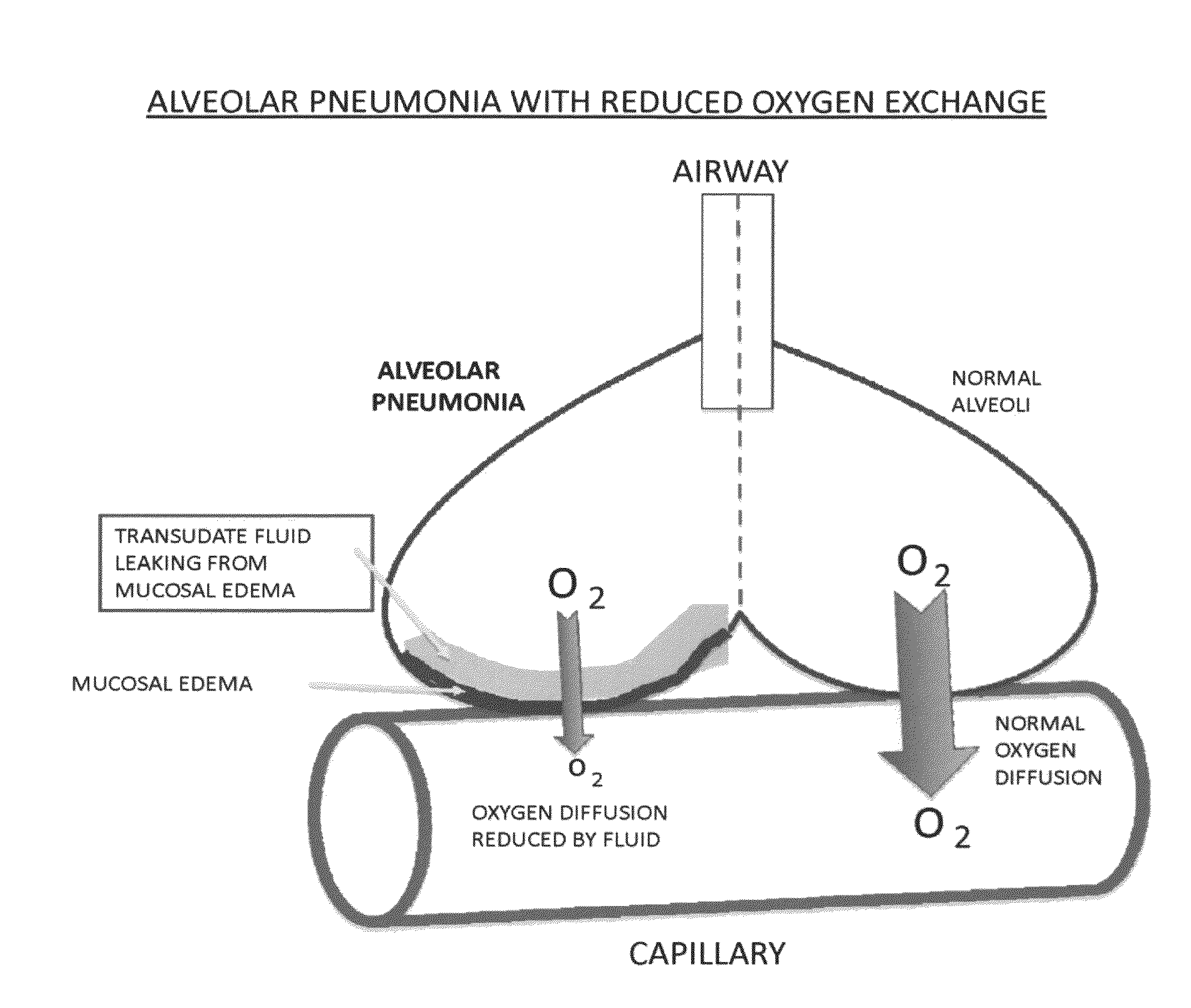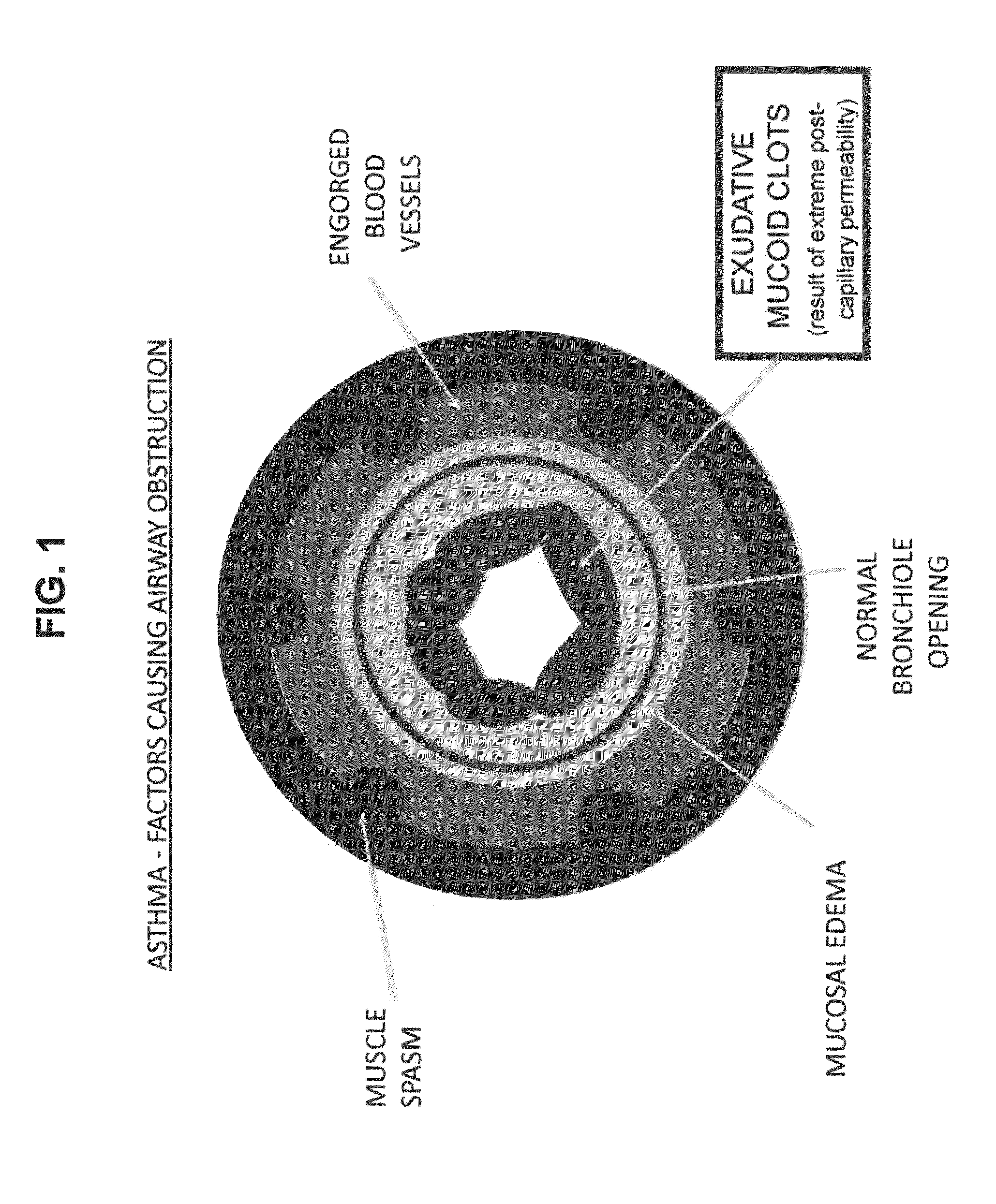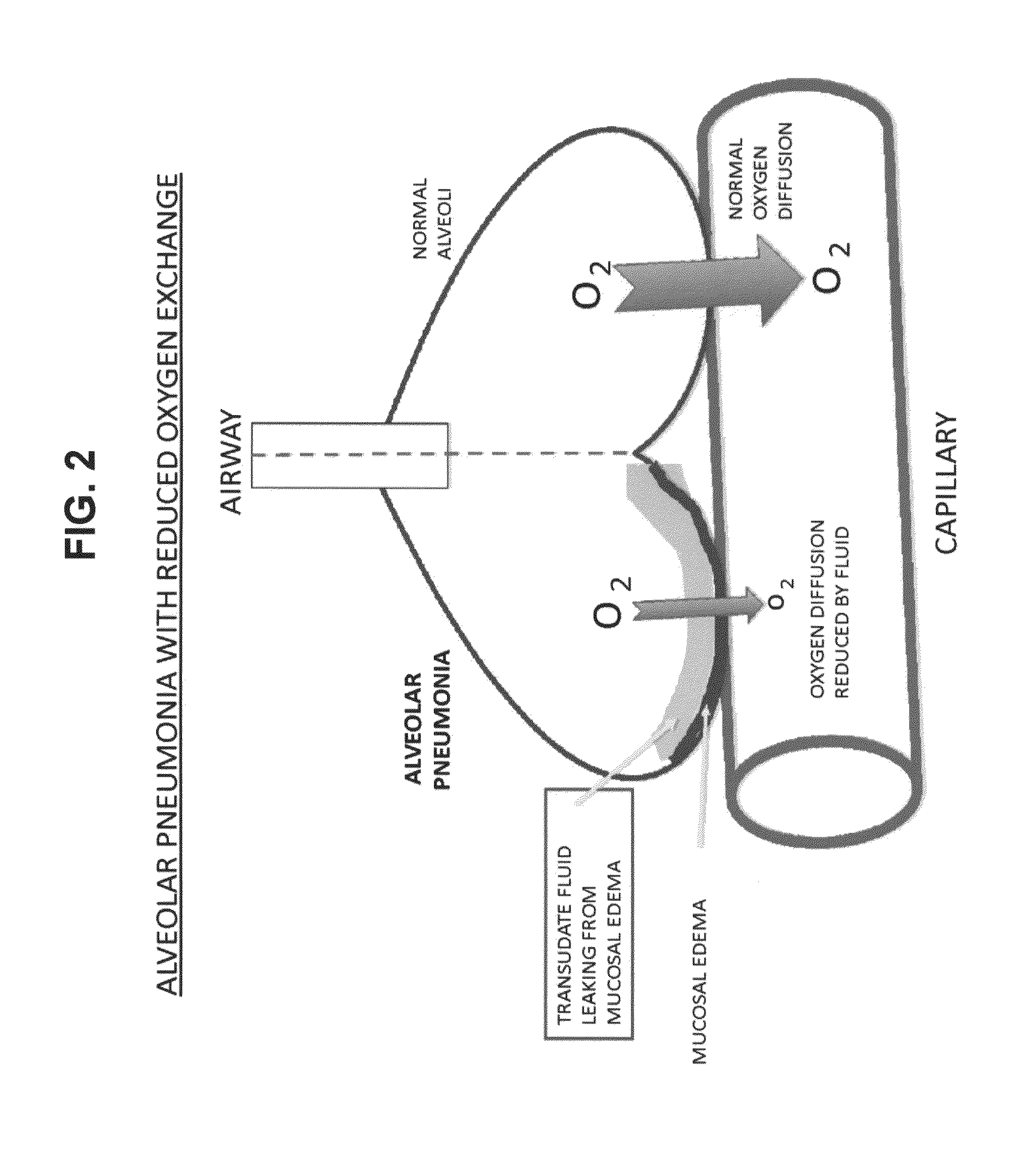Compositions and methods for treatment of pulmonary diseases and conditions
a technology for pulmonary diseases and conditions, applied in the direction of drug compositions, biocides, dispersed delivery, etc., can solve the problems of increasing the risk of infection due to stasis, reducing the clearance of organic debris in the affected area, and ineffective anti-vegf agents currently available, so as to reduce the risk of ischemia and reduce secondarily inflammation, the effect of reducing the risk of ischemia
- Summary
- Abstract
- Description
- Claims
- Application Information
AI Technical Summary
Benefits of technology
Problems solved by technology
Method used
Image
Examples
example 1
Effect of Brimonidine and Dexmedetomidine on the Levels of Albumin in Airspace Following Exposure to an Allergen
[0167]The purpose of this experiment was to determine if there is any effect from pre-treating animals exposed to allergens with brimonidine and dexmedetomidine. IgE-mediated immediate hypersensitivity reactions involve mast cell degranulation; and the released mediators cause plasma extravasation from the post-capillary venules. Therefore, exposure to a pulmonary allergen should increase the concentration of albumin in the airspace within a few minutes of allergen exposure.
Experimental Design
[0168]16 adult Brown Norway (BN) rats were sensitized to ragweed pollen extract, and randomized to 4 groups: control, brimonidine, dexmedetomidine, and saline.
[0169]The control group rats were pretreated with aerosolized saline and administered aerosolized saline. The saline group rats were pretreated with aerosolized saline, then exposed to aerosolized ragweed extract for 10 minutes....
example 2
Effect of Brimonidine vs Saline on Airway Secretions in Inflamed Lungs
[0172]The purpose of this experiment was to compare the effect of brimonidine vs saline on the amount of airway secretions in inflamed lungs of rats. The experiment was designed as follows. 10 rats were administered either saline solution (6 rats) or brimonidine at 200 μg / ml (0.02%), 400 μg / ml (0.04%), and 800 μg / ml (0.08%) (4 rats).
[0173]The resistance at the first time point prior to administration of saline or brimonidine was established at 100%, establishing the baseline. The mean resistance at baseline was similar for the two treatment groups, and therefore, all the measured resistances were expressed as a % of the baseline resistance. After establishing baseline conditions, the first aerosol treatment (saline or brimonidine at 200 μg / ml) was delivered for one minute, followed by 10 minutes of monitoring. The airway resistance at the end of the 10-minute period was the first post-treatment resistance, and the...
example 3 (
Prophetic)
Effect of Brimonidine and Dexmedetomidine on Inhibition of VEGF Inflammatory Cascade
[0178]The purpose of this experiment is to test the effect of administering aerosolized brimonidine and dexmedetomidine on pulmonary function in acute respiratory viral infection.
[0179]Study Design
[0180]A parallel group design of five groups of eight rats each: virus / saline, virus / brimonidine, virus / dexmedetomidine, sham / saline, sham / brimonidine. Treatments are twice daily, beginning one day post inoculation, and ending the morning of terminal studies on day 4, 5 or 6 post inoculation.
[0181]Treatments[0182]1) Brimonidine tartrate 0.05% aerosol, generated with ultrasonic nebulizer (12 ml solution loaded into nebulizer for each treatment), delivered into a holding chamber, and breathed spontaneously by awake rats for 5 minutes twice daily (0800 and 1800 hrs), beginning one day after viral inoculation.[0183]2) Dexmedetomidine HCl 0.05% aerosol, generated with ultrasonic nebulizer (12 ml soluti...
PUM
| Property | Measurement | Unit |
|---|---|---|
| pKa | aaaaa | aaaaa |
| pKa | aaaaa | aaaaa |
| pH | aaaaa | aaaaa |
Abstract
Description
Claims
Application Information
 Login to View More
Login to View More - R&D
- Intellectual Property
- Life Sciences
- Materials
- Tech Scout
- Unparalleled Data Quality
- Higher Quality Content
- 60% Fewer Hallucinations
Browse by: Latest US Patents, China's latest patents, Technical Efficacy Thesaurus, Application Domain, Technology Topic, Popular Technical Reports.
© 2025 PatSnap. All rights reserved.Legal|Privacy policy|Modern Slavery Act Transparency Statement|Sitemap|About US| Contact US: help@patsnap.com



